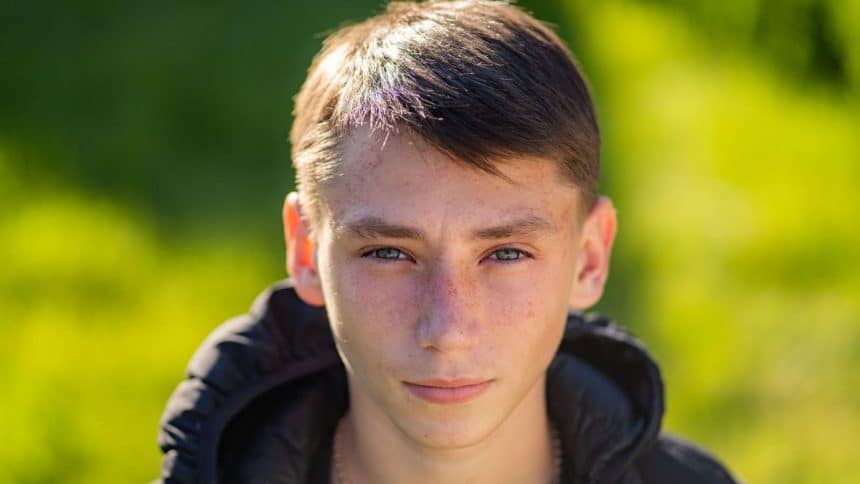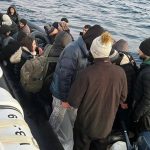“We didn’t believe something horrible would happen. We heard bombing from time-to-time, but never that close,” 17-year-old Oleh said about growing up in Ukraine’s Hnutove, a village about 20 kilometres east of Mariupol bordering the so-called Donetsk People’s Republic.
Many forget that Russia’s war on Ukraine started in 2014, shortly afterUkraine’s Revolution of Dignity, followed by the Russian occupation and annexation of Crimea and the support for pro-Russian separatists fighting the Ukrainian military in the Donbas.
The 2017 award-winning documentary The Distant Barking of Dogs captured Russia’s war on Ukraine through the eyes of the then-10-year-old Oleh. His childhood was overshadowed by war.
Oleh was only seven when the war started, recalling occasionally going to the basement to hide from explosions and gunfire. “I was too young to understand the situation”, he recalled. Despite Russia’s war on Ukraine, Oleh had a relatively normal childhood in Hnutove, playing volleyball and football, spending time with his two cousins, and attending school like any other child.
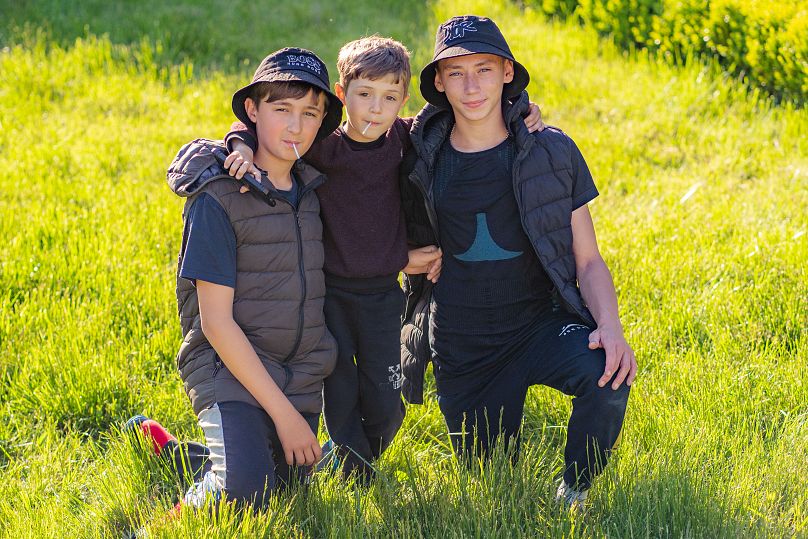
Photo provided by Voices of Children.
Leaving home to seek shelter in Mariupol
When Russia started its full-scale invasion of Ukraine on 24 February 2022, Oleh couldn’t imagine what was to come. He thought it was a day like many others, but when he heard shelling close by, he got scared.
Despite Oleh’s fear, he tried to calm his younger cousins down. “They understood even less”, he remembered. “We tried to stick together,” he said, explaining they quickly realised the shelling this time was closer and more intense.
“We began to understand the seriousness of the situation, that we could die at any moment”, he added, emphasising how important staying together was for his family. “We could not live without each other and began to value each other more”, he stressed.
After Russia attacked Hnutove, the family — his aunt, grandmother, father, and two cousins — decided to leave and go to Mariupol, which they thought would be safer.
Mariupol was one of Russia’s first targets. The port city at the Sea of Azov was known as a centre for grain trade, metallurgy, and heavy engineering, including the Illich Steel and Iron Works andAzovstal. The seaside city was also seen as a “bridge to Crimea”.
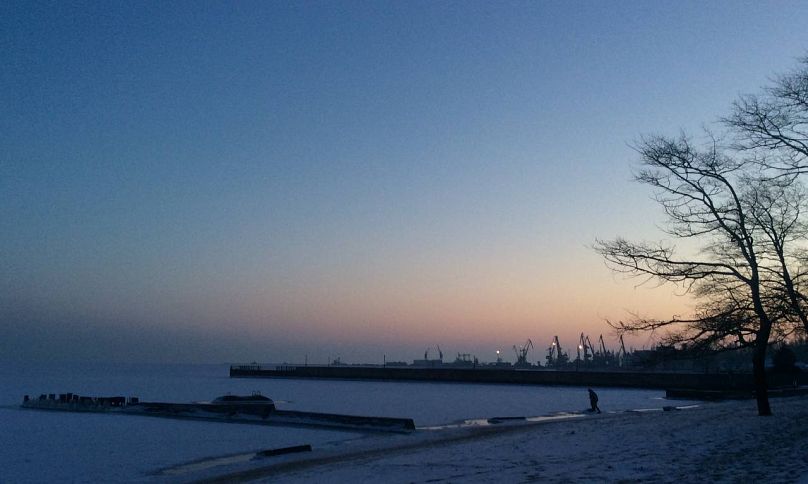
In the first couple of days, Russia carpet bombed the city, and in March, residents lost access to power, running water and gas supplies.
Shortly after, Russia began its blockade and the town with a population of around 400,000 people wascut off from access to food and essentials, leading to people being forced to melt snow for water, leave their shelters to cook food outside on an open flame and endangering themselves.
Trapped in a basement for two months
When Oleh and his family arrived in the besieged city, they quickly realised they were trapped. Leaving Mariupol was impossible. Trains weren’t running, and the roads were too dangerous — one could either get killed by shelling or shot by Russian forces.
They were forced to hide in the basement for two months, completely cut off from the rest of the world. “Sometimes, we sat outside the basement to get some fresh air when there were no loud explosions”, Oleh recalled.
Besides the constant shelling, no one knew what went on in Mariupol and the rest of the country. “We were terrified of hearing the sound of planes flying and dropping bombs on us. They often flew at night. It was scary to sleep”, he added. When risking leaving the shelter, it felt like every trip outside for essentials could be their last.
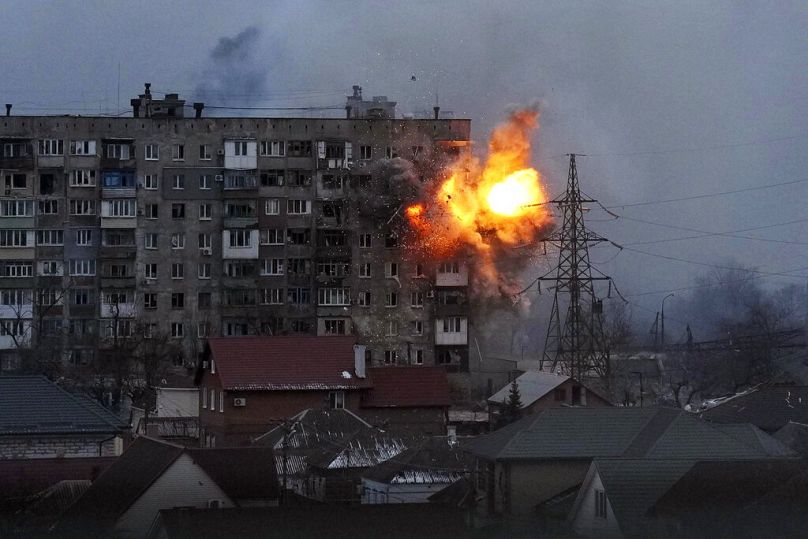
“We were lucky because the owner of the Second-Hand shop opened his shop nearby and allowed us to take clothes to keep warm. That’s where we picked up some things, such as blankets, jumpers, hats and mittens”, Oleh explained.
When it came to water and food, he remembers being forced to drink water from the heating system when they ran out. “We went to a well nearby the basement, but it was often shelled, and dead bodies were on the ground”, he remembered.
Oleh and his family constantly thought about returning home: “We were counting on it very much. Every night, we fell asleep with the hope that we could go home tomorrow.”
After two months, when the situation in the besieged city felt somewhat “stabilised”, his family returned to their hometown, Hnutove.
- Mariupol ‘barely recognisable’ two years into Russian invasion of Ukraine: HRW report
- I escaped from Mariupol — a city that no longer exists
Strangers in your home
When Oleh returned home, he found a place transformed beyond recognition. The once familiar village, a source of comfort, now felt alien and unsettling. His home, which he had hoped would offer a sense of refuge, turned out to be a scene of devastation. Russian soldiers had occupied the house, leaving it strewn with rubbish.
“When we returned to our home, we didn’t feel comfortable. We felt someone else’s presence in the house. It was difficult for us to fall asleep in our own beds”, the 17-year-old explained.
According to Oleh, the village seemed paralysed by Russia’s full-scale invasion of Ukraine, with its infrastructure lying in ruins, no water, transportation, or connection to nearby towns and prices for basic goods having soared drastically. As of February 2022, Hnutove is under temporary Russian occupation.
Not wanting to live under Russian occupation and not feeling safe in their own home any more, the family decided to leave the temporary-occupied Ukrainian territories.
The filtration camp
To leave, they were forced to pass a Russianfiltration camp. These camps involve ruthless “security” checks. Ukrainians wanting to leave the temporarily occupied territories have to embark on a dangerous journey consisting of checkpoints and filtration camps.
Ukrainians often have to go through Russia and third countries like Georgia or Belarus to reach Ukrainian-controlled territory. The direct routes from occupied territories are blocked or too dangerous due to heavy military presence and combat zones.
A neighbour drove the family to the camp in a nearby village. Oleh doesn’t remember where exactly the filtration camp was, but he remembers a field with tents where people were interrogated.
Based on research by theMedia Initiative for Human Rights, there were two filtration camps close to Oleh’s hometown: Novoazovsk and Bezimenne. Both match Oleh’s description oftents in a field-like area. However, Bezimenne seemed to have been closer, with only a 45-minute drive from Hnutove.
According to Aksana Filipishyna, an analyst at the Ukrainian Helsinki Human Rights Union (UHHRU), the filtration camp in Bezimenne held about 5,000 Ukrainian refugees. She continues: “Refugees were held in overcrowded school buildings or tents, facing harsh inspections”, she told Euronews. People also spoke of poor nutrition and lack of medical care.
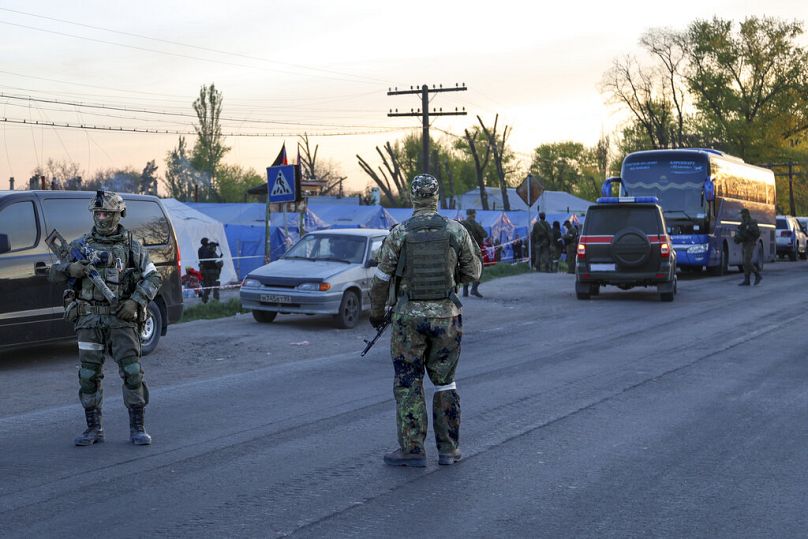
“Some of those who had been filtered mentioned there had been deaths due to the lack of medical care”, she explained, adding that people in the camp were unable to leave of their own free will until they “passed filtration”.
Detainees were often subjected to severe human rights abuses, including torture and extrajudicial killings. After going through the filtration process, many Ukrainians are forcibly deported to Russia. The Russian government denies these relocations, framing them as “evacuations”.
- ‘I focused on survival’: Mariupol escapee tells her story of one month in besieged city
- Mariupol escapees ‘have to pass through Russian filtration camps’
Why did Russia force Ukrainians into filtration camps?
Filipishyna said these camps had two purposes.
“The first was to identify and neutralise individuals considered disloyal to the Putin regime,” she explained. This included pro-Ukrainian people, current or former military personnel, activists, government officials, and others seen as a threat to Russian occupation. “When such individuals were identified, they were often separated from their families, detained, and subjected to physical and psychological violence,” she said.
“Many of these people ended up in Russian prisons or camps. Their whereabouts sometimes remained unknown for months“, Filipishyna said, adding that “some of those who did not pass the filtration were sent to the well-known colonies, such as Olenivka“.
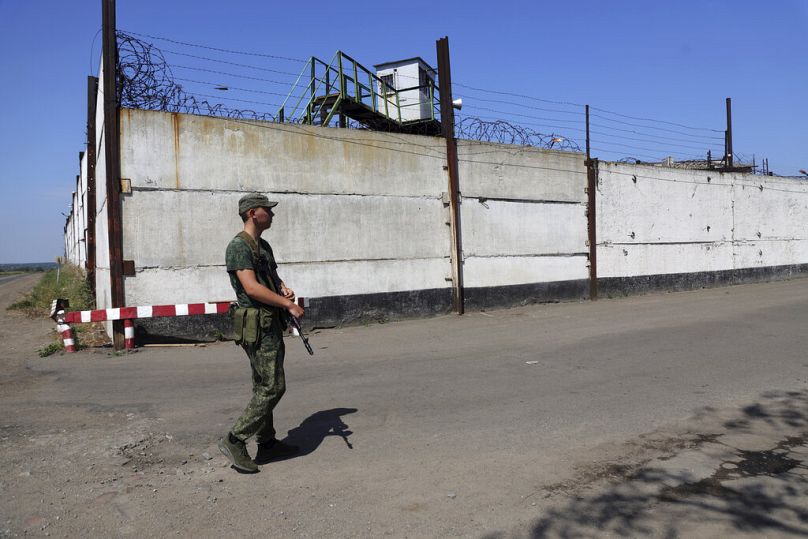
The second purpose was to manage the movement of Ukrainian refugees across Russian territory, said Filipishyna.
After the siege of Mariupol, Russia struggled to cope with the distribution of refugees, so the camps were used to “control their relocation”.
Refugees underwent fingerprinting, body searches, and interviews and then were sent in groups to various Russian cities until further arrangements could be made for their accommodation. “We first heard about places where civilians are concentrated for some kind of inspection and interrogation procedures after the siege of Mariupol“, explained the UHHRU analyst.
To save their lives, people were trying to leave the place under massive shelling by the Russian armed forces in any way possible. The constant rocket attacks and bombing of civilian infrastructure created a situation where people had nowhere to hide. Some managed to get to the part of the territory controlled by Ukraine, while others were forced to cross the Russian border.
Filipishyna added that Ukrainians first encountered filtration measures when crossing the Ukrainian-Russian border in February and March 2022 by being forced to go through the so-called “filtration camps”.
In total, there were at least 21 Russian filtration camps in Donetsk Oblast, researchers atYale University have found.
‘I knew they could do anything to us’
In the camp, Oleh knew he and his two cousins, father and grandmother, were at the mercy of Russian soldiers. “I knew they could do anything to us”, he said. “They told me not to be scared. If they wanted to kill me, they would have already done so”, the 17-year-old remembered.
Waiting for his father, who was still interrogated, Oleh remembers a young woman dressed in only her underwear. She was dragged out of a tent by Russian soldiers. “They put something over her head and dragged her into a car”, he recollected. He never found out what happened to her, whether she was still alive and what these soldiers did to her. “It was terrible to watch. They were behaving like animals”, he added, saying he saw how much they enjoyed humiliating the people in the camp.
While waiting for his father, he recollected hearing the constant sound of people being beaten, tortured and sworn at. Oleh said his father didn’t know what happened to him: “He thought I was one of the people screaming.” The Russian soldiers interrogating his father told him his son was captured and he would never be seeing him again.
Oleh remembered his father screaming: “No, no, no, take me instead. Don’t take my son, take me!” The soldiers were laughing, knowingly playing mind games with his father. “They were evil”, said Oleh, adding that luckily they let his father go.
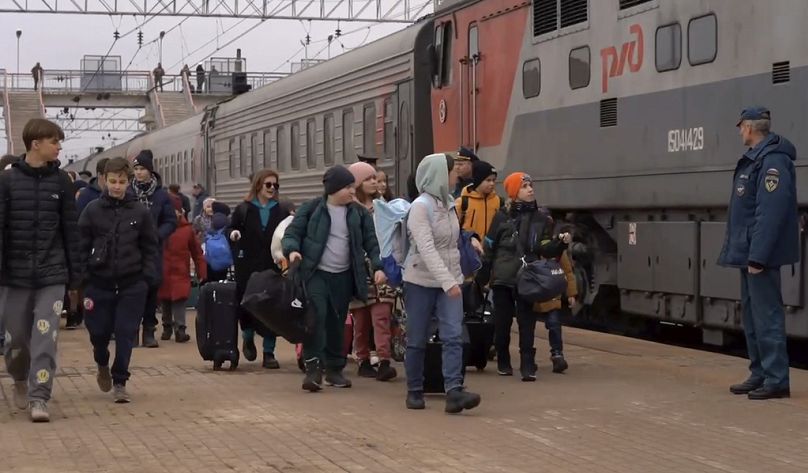
Ukrainian children were often sent to camps across temporary occupied Crimea and various Russian regions like Moscow and Rostov, explained Filipishyna. “Over 40 locations have been identified where Ukrainian children were taken”, she says. Ukrainian authorities estimate 19,500 children have been deported, but the real number could be much higher.
The UN declared the deportations of Ukrainian children as a war crime, with the ICC issuing arrest warrants for Russian President Vladimir Putin and Presidential Commissioner for Children’s Rights Maria Lvova-Belova. According to international law, including the 1948 Genocide Convention, these deportations may constitute genocide.
- ‘Where is Mama?’: How a Ukrainian boy was abducted by Russian forces
- How 17-year-old Ukrainian Valeriia escaped a Russian re-education camp
Journey to Ukrainian-controlled territory
Having passed through the filtration camp after several hours, Oleh and his family had to travel through Russia to reach the safety of the Baltic states.
He remembered the journey and how stressful crossing the border to Latvia, most likely the Ludonka checkpoint. At the time, the checkpoint was one of the last remaining open land border checkpoints between Russia and the European Union.
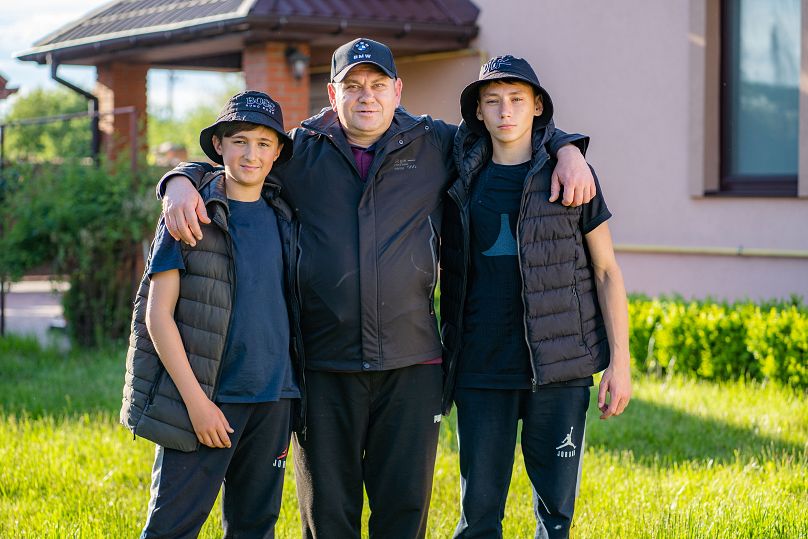
Photo provided by Voices of Children – Charity Foundation.
After they passed the border, they didn’t stop until they reached Warsaw, where they stayed for three days. Oleh recalled they were treated well by volunteers: “They even gave us fruit and drinking water.” After their short stay in Warsaw, they continued their journey to Kyiv, where they still live now.
‘I miss the river in my hometown’
Russia’s ongoing war in Ukraine has left deep psychological scars on children, both those who have experienced conflict since 2014 and those affected by the full-scale invasion.
According to Oksana Pysarieva, a psychologist at the Voices of Children charity foundation, the trauma is pervasive, touching even those far from the front lines.
Children across the country feel the war’s impact through separation from loved ones, fear of death, and loss of security. While younger children struggle with immediate reactions and memories, teenagers show signs of anxiety, depression, and disorientation, Pysarieva explained.
The long-term effects, however, remain uncertain. The children will carry the war’s harsh realities throughout their lives, though, shaping their choices, values, and perceptions of safety.
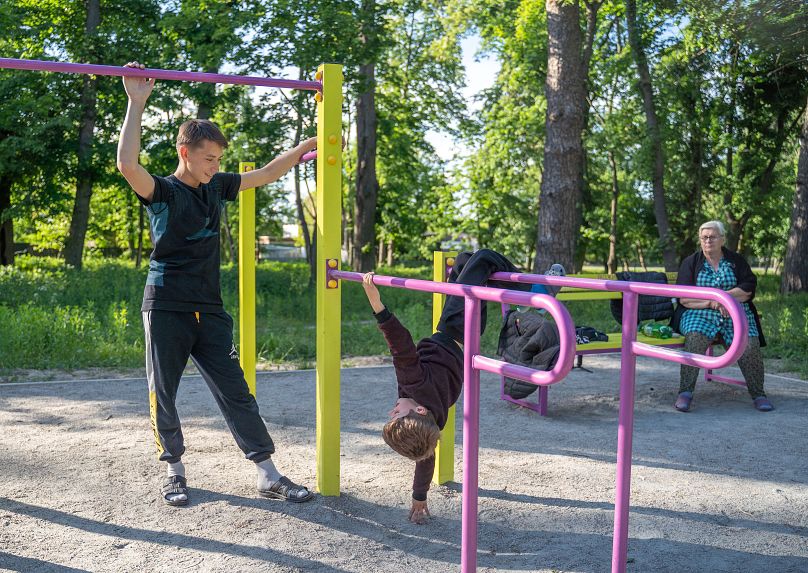
Photo provided by Voices of Children – Charity Foundation.
Oleh’s dream is still to return home to Hnutove one day to say goodbye. “I often think about my home and the river where I spent every summer as a child.”
“My wish is to return one day to say goodbye properly, as we were forced to leave so abruptly. We didn’t even take all the photos from the family album”, he explained, adding that he’d also want to take his grandmother’s sewing machine, which “she misses and loves so much”.
Euronews


